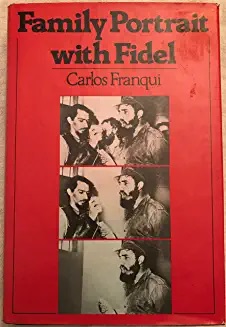
Fidel Castro's Trip to the United States

An excerpt from the book:
Family Portrait with Fidel
by Carlos Franqui
Random House, New York
Fidel's first trip to the United States (on April 15, 1959) demonstrated his intelligence. He neither requested nor accepted the classical official invitation; rather, he had himself invited by the press, the Press Club, through the good offices of a man of irreproachable credentials for the American Establishment, Jules Dubois. Dubois at the time was president of SIP and an opponent of Batista and of the censorship imposed by Latin-American dictators. He was the Chicago Tribune's correspondent in Cuba, a retired colonel, and a person to whom the State Department listened.
For his part, Fidel, through OPLA, hired one of the best public relations firms in the Untied States, and it took charge of all his public appearances during the trip. "Smiles, lots of smiles," was its constant counsel. Afterward the public relations people admitted they had never handled such a consummate actor-even his "fidelenglish" was an asset. He evinced no personality problems and answered the most impertinent questions calmly. He never lost his temper, always kept his good humor. And he visited progressive universities, liberal organizations, the zoo, Yankee Stadium; he ate hot dogs and hamburgers, and tried to make a media splash.
Fidel's appearance also helped. He was always in olive-green fatigues-these were never starched or pressed. He wore his hair and beard shaggy so he would seem older and more mature than his thirty-three years. The publicity people said he looked like an ancient Roman hero. Of course, he was backed by a most respectable delegation, José (Pepín) Bosch and Daniel Bacardi-both of them symbols of international and industrial Cuba. Fidel didn't try to pass himself off as a folk here and never asked for a cent; instead, he tried to look like a calm, serious statesman people would take seriously. Jules Dubois, himself a guarantee of anti-Communist sentiment, introduced the delegation at the Press Club to a thunderous ovation. The only person suspected by the naïve Americans of being tainted by Marxism was your humble servant. I had to laugh, knowing that Raul and the Communists had their sights on me all the time. Fidel was a hit.
Zoo or Picasso
Once again I lost my cultural battles with Fidel. I tried to bring him to the Museum of Modern Art to see Picasso's "Guernica" and Wilfredo Lam's "Jungle." What I wanted was to get Picasso's support for the revolution, but Fidel wasn't buying. Neither in New York nor in Washington. He did go to the zoo, and he did go to Texas and Canada. On other levels the trip was less successful; the efforts of Rufo López Fresquet, Minister of Finance and president of the National Bank, made to secure credits and contracts came to nothing. Fidel didn't really care, and in this he was just like Eisenhower and Nixon. Fidel would agree "in principle" with anything but would never do anything concrete. The meeting between Fidel and Nixon was an out-and-out disaster; their mutual dislike would be long-lived. Fidel's strategy was to seem a friend to all; he would offer his hand and let the others not shake it. And in Washington the prevailing atmosphere was pure disdain. One incident typifies the entire scene. Someone came into the room where the delegation was waiting and was announced as "Mister So-and-so, in charge of Cuban affairs." To this Fidel could only reply, "And I thought I was in charge of Cuban affairs."